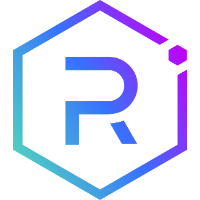The token framework is the buzzword redefining Argentina’s financial future in 2025. With a long history of inflation and currency instability, the country’s financial ecosystem is getting a digital makeover. Argentina’s National Securities Commission (CNV) is leading this revolution, which has introduced a sandbox model allowing blockchain experimentation under regulatory watch.
This token framework isn’t just a cool concept—it’s a high-stakes pilot program already in motion. Big players like Matba Rofex Group, the Industrial and Commercial Bank of China (ICBC), and fintech innovator Cocos Capital are on board. Their goal: test how tokenized debt works across the full financial lifecycle—from issuance to clearance and settlement—entirely on blockchain.
Argentina Chooses Action Over Uncertainty
While other countries debate crypto policies, Argentina has hit the ground running. Its token framework offers a rare blend of bold experimentation and responsible oversight. The idea is simple: test first, regulate later—with actual performance data.
What makes this effort especially credible is the mix of fintech innovators and legacy institutions working together. This public-private partnership ensures both innovation and accountability are baked into the process.

A Solution Born from Economic Pressure
Argentina’s financial instability has been no secret—hyperinflation, currency controls, and limited access to global capital have plagued the nation for decades. That’s why the token framework is more than innovation for innovation’s sake. It’s a response to long-standing structural issues.
Tokenized assets could provide a more efficient, secure, and transparent way of raising and moving capital. Blockchain’s immutable record-keeping and decentralized nature give regulators a powerful tool to monitor and verify transactions in real-time. It’s a natural fit for a country hungry for solutions.
What Is Argentina Actually Testing?
This isn’t a tech trial happening in a vacuum. The token framework is centered around very real objectives:
-
Determine how blockchain impacts market trust and efficiency
-
Assess whether investor safeguards hold up in a tokenized environment
-
Understand the behavior of digital debt instruments during actual trading
The pilot project involves issuing a debt instrument entirely on-chain. From the moment it’s created to when it matures, the token’s life cycle plays out digitally—with the CNV monitoring every step.
Opening New Doors for Retail Investors and Startups
One of the strongest promises of the token framework is its potential to democratize investing. Retail investors, who are often priced out of bond markets, could participate via fractional ownership—buying a piece of a high-value asset for just a few dollars.
Startups also benefit. Under this model, issuing digital securities becomes cheaper and faster. Instead of months of paperwork and red tape, companies could raise funds in a matter of days, thanks to automated smart contracts and transparent, tokenized structures.
A Blueprint Other Nations Might Follow
Argentina’s token framework is getting global attention for a good reason. It could serve as a model for other emerging economies struggling with outdated systems and limited market access. Brazil, Turkey, and Nigeria—all with similar economic dynamics—may find inspiration in Argentina’s measured but daring approach.
What’s important is the clarity and structure built into the program. This isn’t crypto chaos—it’s a carefully regulated experiment meant to inform long-term digital asset policy.

Challenges Are Real, But So Is the Vision
Even with optimism, the token framework faces a few uphill battles. Blockchain infrastructure must be battle-tested to handle high-volume, secure trades. Legal clarity around investor protection in decentralized environments is still a work in progress.
There’s also the matter of user education. Many retail investors don’t yet understand how tokenized securities differ from traditional ones. Without proper onboarding, trust and adoption could lag.
But Argentina is leaning into these risks with eyes wide open. The rewards—greater inclusion, better efficiency, and renewed investor confidence—could be worth the gamble.
Follow us on Twitter and LinkedIn, and join our Telegram channel for more news.
FAQs
Q1: What is Argentina’s new financial sandbox about?
It’s a test zone where companies can trial blockchain-based securities under CNV regulation.
Q2: Who are the partners in the pilot project?
Matba Rofex, ICBC, and Cocos Capital are among the first collaborators.
Q3: What kinds of assets are being tokenized?
The initial test focuses on debt instruments like bonds.
Q4: Will this help everyday investors?
Yes—fractional ownership could lower entry barriers for retail participants.
Glossary of Key Terms
Token Framework: A structured regulatory system for testing digital asset issuance and trading.
CNV (Comisión Nacional de Valores): Argentina’s national securities regulator.
Tokenized Asset: A digital representation of a real-world financial product like stocks or bonds.
Regulatory Sandbox: A controlled environment for testing financial innovations with regulator support.
Fractional Ownership: Dividing an asset into smaller parts so multiple investors can own shares.

























































































![BitTorrent [New]](https://s2.coinmarketcap.com/static/img/coins/64x64/16086.png)



















